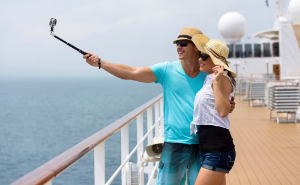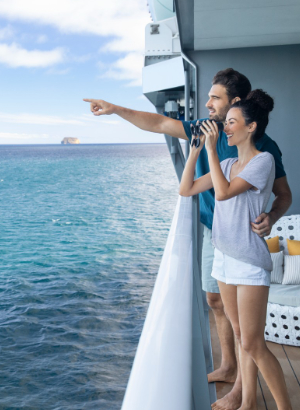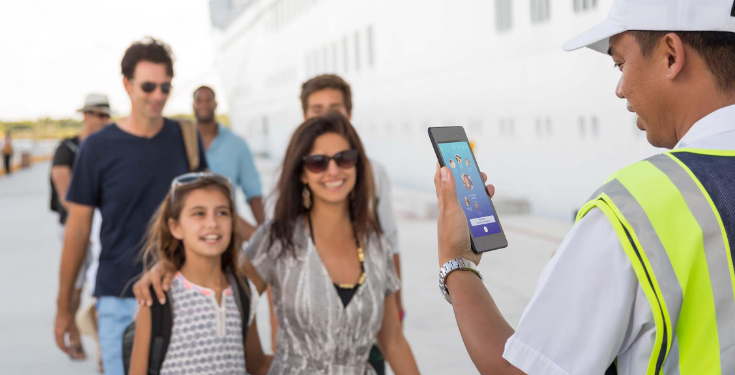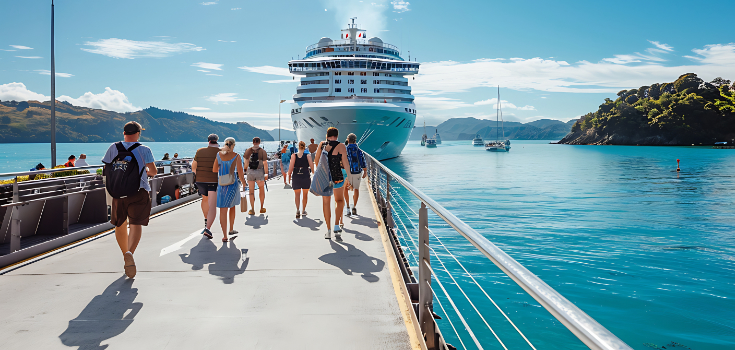Posted on 29-Aug-2025 by Shruti Verma, Contributing Writer
If you’re on your first cruise, knowing what to expect can go a long way to having an enjoyable experience. Here’s a quick guide.
What to pack and what to leave behind?
Packing for a cruise means making sure you have everything you might need while keeping your luggage light. The must-haves include:
Clothes, shoes, and accessories
Most cruises follow a smart casual dress code. Ideally, mix-and-match ensembles that can transition from day to night looks. Also, think in layers so you’re ready for weather changes. You’ll need:
-
Dresses, jeans/khakis/slacks/shorts/skirts, and short- and long-sleeved t-shirts/button-down/polo shirts/tops
-
1-2 formal outfits if required as per the ship’s dress code
-
1-2 swimsuits, cover-ups, and swimming accessories
-
Flip-flops and casual footwear
-
Comfortable walking shoes
-
A light jacket/throw/shawl and a rain jacket. You may need additional jackets and sweaters, depending on the cruise destination
-
Comfortable sleepwear
-
Accessories like inexpensive jewellery, sunglasses, belts, hats, and a daypack/ beach bag
-
Light stoles to cover your head and shoulders if you are visiting religious sites on your excursions
 Documents
Documents
-
Passports and visas
-
Overseas travel insurance documents
-
Cruise booking confirmation
-
International driving licence (if required)
-
Vaccination certificate (if required)
-
Copies of any prescriptions being currently followed
-
List of emergency contacts
 Other essentials
Other essentials
-
Toiletry kit with travel-sized bottles of your preferred products
-
First aid kit and seasickness medication (these are also available onboard most ships)
-
Laundry kit
-
Feminine hygiene products
-
Insect repellent
-
Cell phones/ laptops/ tablets with chargers
-
Voltage adapters
-
Portable speakers/headphones
-
Binoculars
-
Collapsible tote bag and wet bag for your day-trip excursions
-
Umbrella/poncho
-
Ziplock bags
-
Hand sanitizer and wipes
-
Reusable water bottle
-
Waterproof phone case
What not to carry
Your luggage will go through a security scanner before boarding, and any prohibited items found may be confiscated. A detailed list of prohibited items is available on individual cruise line websites. In general, do not carry:

-
Weapons of any kind, including knives, scissors with blades longer than 4 inches, self-defence items like tasers and pepper sprays, and imitation weapons
-
Flammable liquids
-
Illegal drugs
-
Explosives and fireworks
-
Appliances with heating elements
-
Alcohol
-
Candles and incense
-
Baseball bats, hockey sticks, cricket bats, skateboards, roller skates, golf clubs, bows & arrows
Embarkation day – what to expect
Embarkation day is your first taste of cruise life. Here’s how it works.
Arrive at the scheduled time
Most cruise ships expect guests to check in no later than 2 hours before departure. At the terminal, cruise staff will check your booking documents and screen your luggage before letting you board the ship. It may take a while, so be patient.
Expert Tip: For cruises that depart in the evening, the check-in process typically begins around noon and lunch is included onboard the ship on check in day. So apart from enjoying a sumptuous buffet, you will get more time to explore the ship before sailing time. It is also advisable to arrive into the departure port city at least one day prior to the cruise to buffer any flight cancellations and delays.

You may not see your luggage till later in the day
Luggage is usually delivered a few hours after boarding. Speak to your cabin steward if your luggage hasn’t been delivered by the time the ship is getting ready to leave the pier.
Expert tip: To ensure you’re comfortable, carry your essentials, a change of clothes, electronics, and valuables in a carry-on bag.
What to do after boarding?
Your cabin may not be ready for you as soon as you board. Use this time to explore the ship. On most ships, you’ll hear an announcement once the cabins are ready for you.
The first thing to do is watch the ship’s safety video and also attend the mandatory safety drill at your assigned muster station. Next, unpack and settle into your cabin.
The Onboard Experience
Cruise ships are packed with amenities and activities to keep you entertained throughout the voyage. Here are a few points worth noting.
The cruise app
Most cruise lines now have an app with spa, restaurant, and casino timings, daily activity schedules, and shopping promos. You can also use it to book meals at specialty dining restaurants, reserve excursions, and check your onboard account. Download the cruise app as soon as you board and start planning your onboard adventures.
Onboard dining venues – they’re not all the same
Luxury cruise ship packages often include meals at the buffet/main dining room. Most allow casual wear, barring swimwear and flip-flops. A dress code, if any, is usually enforced only for dinner. Seating is often banquet-style with shared tables. Optionally, you can book a table at one of the ship’s specialty restaurants or order cabin service. These meals may be chargeable.
Snacks at typically available throughout the day, and nobody will think twice if you carry a croissant out of the buffet. You can also bring your own packaged snacks onboard.
Cruise ship packages often include complimentary water, tea, and coffee. Alcoholic beverages, soft drinks, and specialty coffees can be bought individually or through a drinks package.

Shore excursions
Guided shore excursions are usually optional experiences available as billable add-ons. Ideally, book excursions in advance as seats may be limited.
Alternatively, you can explore ports on your own or book independent tours by local guides. Either way, once you get off the ship, it is your responsibility to get back on time. Gates usually close half an hour before departure.
Managing onboard expenses
Most cruise ships will give you a personalized card/medallion to make onboard purchases. This can be linked to your debit/credit/prepaid cards or activated with a cash deposit.
Most cruise ships include pre-paid gratuities as part of the cruise fare so you don’t need to tip separately onboard.
Staying connected at sea
Rather than activate expensive cellular roaming services, opt for an eSIM for port days or purchase a Wi-Fi package from the cruise line. Some cruise apps also offer chat services to keep in touch with your cruise companions.
A few more tips:
-
Keep your phone on airplane mode to limit roaming charges.
-
Pre-download maps, documents, and entertainment content.
-
Turn off automatic updates and background data syncing options.
Ending a cruise
Cruise ships typically follow specific disembarkation protocols. You’ll be given instructions about how to settle bills, when to vacate the cabin, disembarkation times, and where to wait in between. Most amenities, except select dining venues, are closed on the last day of a cruise. Note that breakfast hours may be limited.
You can carry your bags off the ship yourself or let porters transfer them. In case of the latter, bags must be packed, tagged and handed over the night before. You will receive them at the terminal, so keep your essentials and documents separately in a carry-on bag.
Disembarkation and clearing customs can take time, so allow a generous buffer if you have a same-day flight. You must wait for your allotted time to leave the ship, though you can disembark later (unless you have a scheduled transfer).
Now you’re ready to enjoy a cruise! Don’t hesitate to reach out to us if you need any further clarifications.